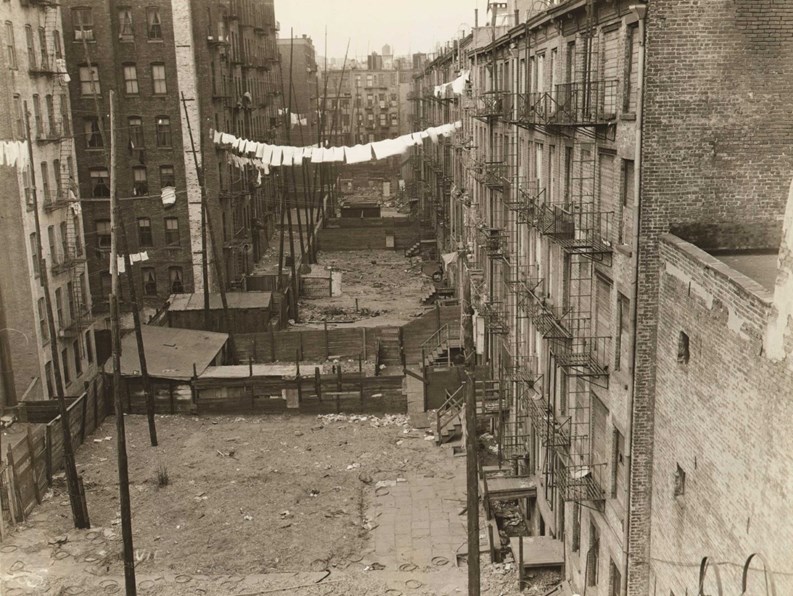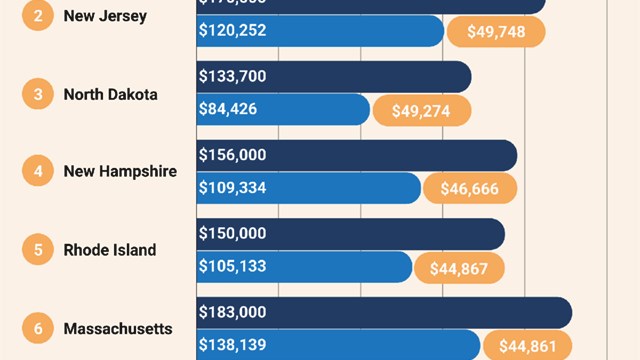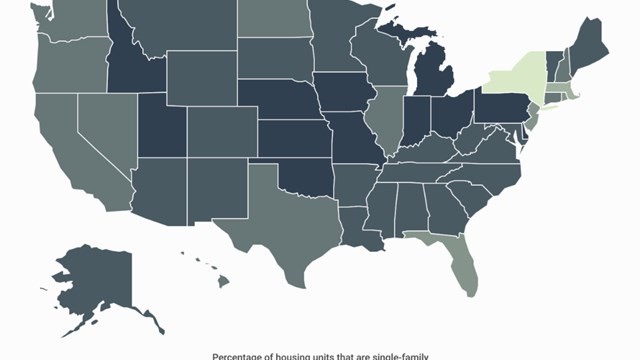Emma Lazarus perhaps said it best in her immortal poem in which she spoke about the wave of immigrants that were welcomed to American’s golden shores. Generation upon generation of newcomers have chosen to settle in New York City and its boroughs to find their piece of the American dream. They came from every country, economic class and social strata to the Lower East Side of Manhattan, to Brooklyn and Queens, to places like Bushwick and Bensonhurst and many other neighborhoods, to start a new life in America. Between 1820 and 1860, a total of four million immigrants entered the United States, most coming through New York City.
The Early Housing Movement
Needless to say, this teeming new population needed places to live. Ghettos of tenement housing developed as the most expedient form of housing accommodation for the poor and lower middle class, and it was substandard at best, with densities that defied description. According to Richard Plunz, in “A History of Housing in New York City,” the housing design of the tenement was specifically engineered to maximize densities within the constraints of New York City’s 25-by-100-foot building lot system. “The height was five or six stories. The long tenements were commonly called railroad flats because the rooms were organized like cars on a train. Frequently older structures were converted to tenements by adding floors vertically, and by ‘back building’ or filling in the rear-yard areas with additional housing. By 1865, hundreds of Manhattan blocks had been overbuilt as tenement housing, with no standards for minimum space, light, or ventilation,” Plunz says.
This pattern of overbuilding and grossly unsanitary conditions ultimately led to social reform, legal intervention and legislative oversight of the city’s building bureaucracy. The city’s first comprehensive housing law, the Tenement House Act of 1867, marked the start of reforms bent on raising the standards of low-cost housing design. This act attempted to impose new building construction regulations to address the special problems inherent in tenement housing. Most of the upper class housing of the day was limited to three or four-story brownstones or Federal-style townhouses with all of the lavish accoutrements that a person of John Jacob Astor or William Henry Vanderbilt’s stature would expect.
A breakthrough came in 1880 with the perfection of the passenger elevator for residential use. This, among other modern inventions such as gas lighting and plumbing, was instrumental in the development of the high-rise luxury apartments we know today.
Cooperatives Come Into Existence
Cooperative housing was said to have had its start in Rennes, France, according to a legal brief written by Attorney Richard Siegler of Stroock, Stroock & Lavan and Herbert C. Levy of the National Association of Housing Cooperatives (NAHC). England, Switzerland, and Scandinavia also experimented with the concept through the early part of the nineteenth century. Several buildings have reportedly laid claim to being New York City’s first cooperative building; some of them were called ‘home clubs.’ Siegler says it was most likely The Randolph, an apartment building on West 18th Street built in 1876.
Andrew Alpern, though, says in his book, “Luxury Apartment Houses of Manhattan,” that historian Christopher Gray has determined the site of New York City’s first co-op to be 152 West 57th Street. According to Alpern, that first co-op, the Rembrandt, was erected in 1881 and “was the prototype of a bevy of other cooperative apartment ventures brought to fruition over the ensuing years.” And a third building, the Hotel Chelsea, bills itself as the first cooperative apartment complex.
The Labor Cooperatives
New York City most likely owes its proliferation of co-ops to two men, one an architect and the other a social reformer. The so-called father of cooperative housing, Abraham E. Kazan, grew up as an eyewitness to appalling tenement conditions and began to think of ways of improving housing within cities. As the president of the Amalgamated Clothing Workers (ACW) Credit Union, Kazan understood that most people, rich and poor, considered that home ownership is a privilege that would have to be earned. Yet in the realm of life’s routine necessities, owning a home required a sizable initial investment that was usually beyond those of moderate means or salaries.
The aforementioned architect was Herman J. Jessor. From the Amalgamated Cooperative Apartments of 1927 through Co-op City and Starrett City in the 1970’s Jessor designed over 40,000 limited-equity cooperative apartments for New York City’s working families, making him the most prolific architect of middle income housing in the city’s history.
Jessor advocated for what came to be known as the “tower-in-the-park” design of architecture and urban planning. He was also a proponent of urban renewal, a process which later became much maligned for its ‘slum’ clearance activities. Throughout much of his career which spanned five decades, he worked for labor organizations like the ACW and, later, the United Housing Foundation (UHF), a non-profit organization created by the ACW and other labor, civic and housing groups in the early 1950s that came about to promote consumer cooperatives, notably housing.
Jessor worked on the first limited-equity cooperative in the city, the Bronx Amalgamated Cooperative Houses, in 1927, and he was the architect for Seward Park Houses, Hillman Houses and East River Houses, large complexes at Grand Street on the Lower East Side. Another jewel in his crown was Co-op City, the 15,500-unit project in the Bronx, which he was instrumental in building. He also designed the Penn-South housing complex in Manhattan. His complexes were rich in amenities and included things like cross-ventilation for working-class families without air conditioning.
Another of Jessor’s designs is Rochdale Village—one of the largest cooperatives in Queens. The brainchild of—who else—Robert Moses, the complex drew its inspiration from the Le Corbusier “city-within-a-city” paradigm. In addition to 5,860 residential units, Rochdale Village’s 120 acres houses two public schools, a police station, a library, two malls and its own power plant.
Economic Woes
It’s no surprise that The Depression era was especially hard on city residents and cooperative housing was not immune. In his book, Plunz writes that labor co-ops, such as Amalgamated, were among the first to face serious difficulty. “The economic storm in its full fury began to be felt in 1932. Large numbers of cooperators found themselves totally unemployed. A good many could not maintain their apartments. Some, in fact, not only did not pay the fixed monthly rental, but had to be helped by extending them credit in the service departments of the organization. Ugly rumors were being circulated that the development would not survive the storm. The income of the corporation dropped to about 60 percent of its former receipts. Operating expenses that could be deferred were eliminated.” Plunz goes on to say that stop-gap measures were put in place, some federal relief did come in the way of interest-free loans, but some cooperatives like The Shalom Aleichem Houses, were unable to ride out the storm and failed, put into receivership by the bank. As a result, a great majority of co-ops went under by 1934.
Section 213’s
After World War II, a growing nation needed housing to accommodate the baby boomers with young families and the thousands of veterans returning from the war. This led to major reforms and programs aimed at encouraging moderate and low-income public housing. Congress passed the Housing Act of 1949 to promote urban renewal and included a provision in the Housing Act of 1950 authorizing 50-year low-interest loans to housing cooperatives to serve “middle-income” working-class Americans who earned too much to qualify for public housing but too little to buy a house on their own.
“The act was originally established by Congress to help returning veterans,” says Greg Carlson, executive director of The Federation of New York Housing Cooperatives and Condominiums (FNYHC). “At the time it was a form of ownership that was less expensive than buying a single family home. And this was way before condos were even being thought about. It was a form of ownership that could be built for a very low cost,” Carlson explained.
Section 213, Title 2 was part of the National Housing Act, and is covered by U.S. Department of Housing and Urban Development (HUD) regulations in which the federal government insured the underlying mortgage, according to Attorney Marc Bresky, whose offices are in Elmhurst, Queens.
According to HUD’s website, Section 213 enables nonprofit cooperative housing corporations or trusts to develop or sponsor the development of housing projects to be operated as cooperatives. Section 213 co-ops are those whose mortgages are insured by HUD. But since Section 213 co-ops are not subsidized, as are other middle-income co-ops like those in the Mitchell-Lama program, there are no laws limiting profits when shareholders sell. Section 213 insures mortgage loans to facilitate the construction, substantial rehabilitation, and purchase of cooperative housing projects, and also insures lenders against loss on mortgage defaults.
Most of the 213s in New York City were located in Queens and Brooklyn and the outer-boroughs rather than Manhattan because those areas had a greater amount of vacant land, Carlson said. Carlson’s organization, the FNYHC, was actually originally called the Federation of 213s in 1953 because it began as Section 213 housing meetings.
Today not many 213 co-ops exist from the approximately 400 that were built in the early to late 1950s and 60s, and the New York City landscape has transformed itself into more of a condominium town. There are still a few, he said, that operate like those early 213s but those apartments have occupancy agreements and not proprietary leases. Forty years later most of the 213s had paid off their mortgage loans and converted into conventional cooperatives, he said.
Bresky also mentioned that these cooperatives often have to go in and amend their bylaws and governing documents, although they may keep the salient characteristics of the original 213’s, such as provisions like a waiver of option, where shares can be bought back at book value. “We have to delete all the references to FHA and bring them up to speed with the modern-day co-ops,” he said. “The future for cooperative housing is bright.”
“This program was one of the most successful programs HUD ever instituted,” Carlson explains. “They only had only one default—mortgage default—which is the highest ever in any of their programs.”
Mitchell-Lama Co-ops
Another form of limited equity cooperative housing that came about in the 1950s was Mitchell-Lama. The brainchild of state Senator Senator MacNeil Mitchell and Assemblyman Alfred Lama and signed into law in 1955, this form of housing was intended to stimulate private development of affordable housing.
After 20 years, owners are permitted to leave the program and convert to privately set rents. Mitchell-Lama rentals began appearing in 1962, peaked in the middle ‘70s, and came to an end in 1981. During the 1960 Great Society era, Mitchell-Lama became the model for new federal housing subsidy programs, under which, mortgage interest subsidies lowered the financing costs to private developers. In return they accepted use restrictions limiting the rental of vacant units to eligible low-income families.
The oil crisis of the late ‘70s and economic recession in the mid-1980s also changed the housing landscape of New York City forever. Landlords were unable to keep rents under control and in an effort to stay afloat were forced to convert many of their rental properties to co-ops.
Carlson says, “In the early ‘80s, the economy was good. Banks were lending, no questions asked. Co-op sponsors didn’t take into account that there could ever be a depression, and this came back to bite them.”
The resulting market crash of ‘87 therefore sent many co-ops under. “It was the buildings with all the financial gimmickry, like wraparound mortgages [where the pre-existing mortgage is incorporated into a large mortgage held by the sponsor], that most frequently defaulted,” he explains. “At the same time, a number of sponsors realized they didn’t have to sell, but could rent at non-rent-stabilized prices, which kept them from having to default.”
Today Mitchell-Lama’s are not defaulting but are choosing to privatize. Many of them primarily completed between 1965 and 1978, and having passed their 20-year anniversary, are opting out of the subsidized program to go market rate. It is the prerogative of the developer and the building to decide whether they wish to remain in the program. Some 23 percent of the city’s 120,917 apartments in the major subsidy programs (most in Mitchell-Lama) have chosen the route of opting out.
Co-ops Today
Today of the more than 1.8 million units of multi-family housing, according to a Department of Finance report on market and assessed values, about 390,000 units are co-ops and 100,000 condominiums. Most of the cooperatives we think of today came about in the early part of the 20th century or were converted in the 1980s from rentals. After World War I, hundreds of cooperative-styled buildings started going up on Fifth Avenue, Park Avenue and in the largely undeveloped areas of Manhattan along the recently completed Central Park. What made them different from other development in the city was the concept: townhome living in a multifamily structure. In order to lure wealthy buyers both uptown and out of the horizontal format of private homes, these buildings were luxuriously appointed and attempted to retain the air of privacy that private homes afforded.
“People hadn’t really lived in this type of community before,” says Julianne Bond, a broker with the Maytays Group, a division of the Corcoran Group. “Many of them started out as co-ops, but some of them started out as luxurious rentals.
Debra A. Estock is the managing editor ofThe Cooperator.










2 Comments
Leave a Comment